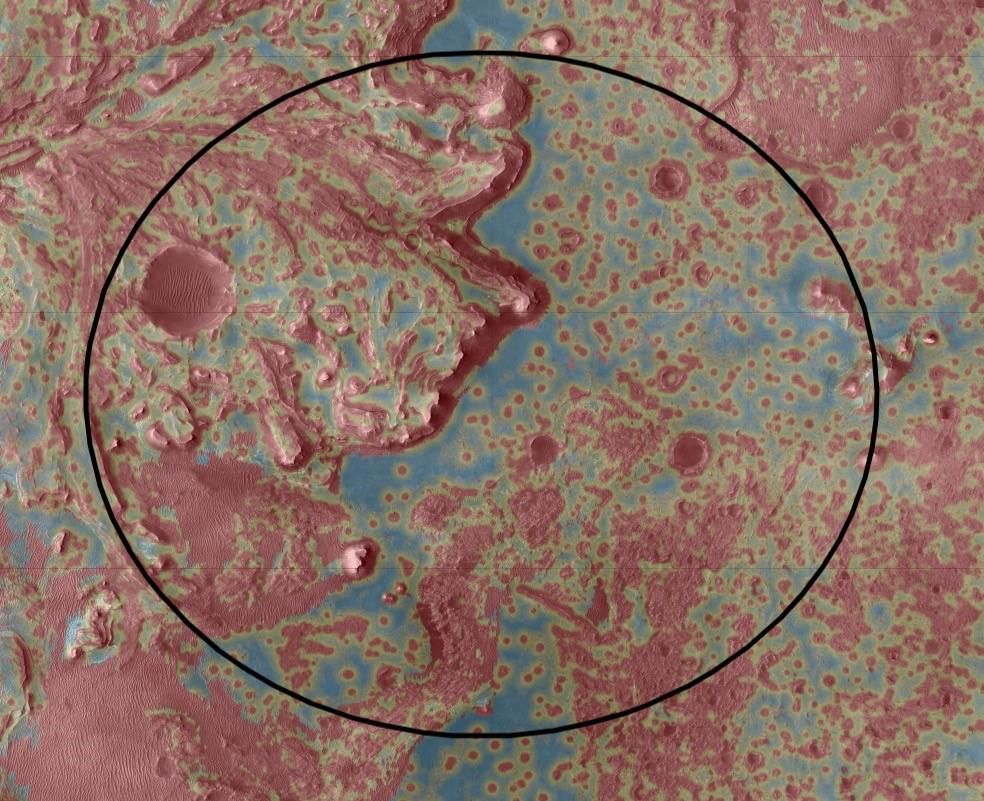Perseverance Rover Shares Its First Video and Audio of Mars
The Curiosity rover landed the same way in 2012 but the engineers who designed the system hadn’t seen it in action until now
/https://tf-cmsv2-smithsonianmag-media.s3.amazonaws.com/filer/04/2a/042ac3ff-a92c-4176-83fc-871394b90ed0/feb23_rover_drop.jpg)
A quiet breeze accompanied by high-pitched mechanical whirring—that’s the sound that NASA’s Perseverance rover recorded after landing successfully in Mars’ Jezero Crater on February 18.
NASA released the audio on Monday afternoon, alongside stunning footage of the landing recorded by several cameras mounted to the rover and sky crane, Kenneth Chang reports for the New York Times. It is the first conventional video recorded on Mars, distinct from animations that have been created by flipping through a series of photographs. Engineers at NASA’s Jet Propulsion Laboratory will use the video to analyze the landing system, but it also has a broader purpose: to give anyone who sees it a glimpse of what it would be like to land on Mars.
The video begins from the perspective of a camera at the top of the aeroshell, which is the capsule that holds the rover. The red and white parachute—the most massive parachute deployed on Mars—shoots back and opens.
“You can get a sense really of how violent that parachute deploy and inflation are,” said JPL Perseverance engineer Allen Chen during a press conference, per Leah Crane at New Scientist. “The parachute is packed so densely that the pack is basically the same density as oak, and it’s about 150 pounds. It gets launched out of the spacecraft with a mortar, which is basically a cannon, with a muzzle velocity of around 100 miles per hour.”
While describing the parachute, Chen also hinted that it might hold a hidden message. JPL is notorious for slipping puzzles into the designs of their spacecraft—the Curiosity rover’s tire tracks leave behind the Morse code for “JPL”, for example.
So far, fans online have decoded the message “Dare mighty things,” from the parachute, Martin Belam reports for the Guardian. The parachute can be read as binary code, where a red panel represents a “one” and a white panel represents a “zero,” eventually creating the JPL motto. The outermost ring of panels may translate to JPL’s latitude and longitude.
When the landing capsule reaches about seven and a half miles above the surface of Mars, the heat shield drops out from below another camera. The footage shows it shrink as it falls down into the rocky Mars terrain.
Soon after, the landing system begins to use terrain-relative navigation to find a safe spot to land. A map of hazards in the Jezero crater landing zone shows how high the stakes were for Perseverance, as it’s speckled and striped in red danger zones.

When the capsule comes within 1,000 feet of touchdown, the ground-facing camera shows wind buffeting the sandy surface of Mars, and the sky crane maneuver begins. Two cameras—one pointing up from the rover, and one pointing down from inside of the sky crane—show the moment that Perseverance drops out of the crane like a cat burglar. The rover used pyrotechnically fired blades to sever the cord and touch down on the Martian surface.
“It gives me goose bumps every time I see it,” said JPL engineer David Gruel during the press conference, per the New York Times.
The spacecraft gathered about 30 gigabytes of data and 23,000 images during the landing process. Engineers at JPL will be able to analyze the videos frame-by-frame in order to improve on landing precision in the future, in order to support the future Mars missions that will pick up Perseverance’s rock samples from Mars to bring them to Earth.
The video was also a way to bring the public along for the ride.
“I’ve been waiting 25 years for the opportunity to see a spacecraft land on Mars,” says JPL’s Perseverance deputy project manager Matt Wallace in a statement. “It was worth the wait. Being able to share this with the world is a great moment for our team.”

